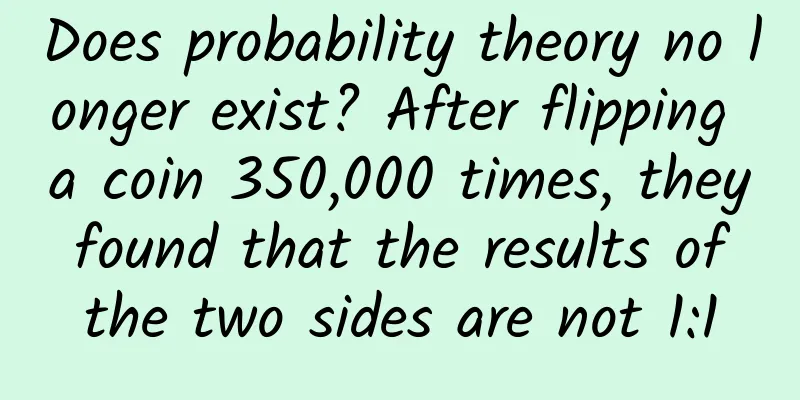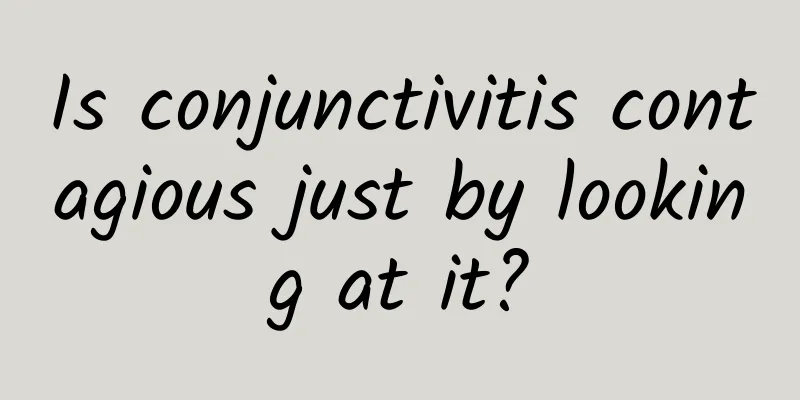Does probability theory no longer exist? After flipping a coin 350,000 times, they found that the results of the two sides are not 1:1

|
This is the most scientific coin tossing tutorial. We often dwell on a problem and have trouble making a quick decision, such as whether to eat noodles with soybean paste or McDonald's tonight; or whether to accept a job opportunity; or whether to confess to him/her tonight... Image source: Giphy At this time, many people will flip a coin and use the heads and tails of the coin to make a choice for themselves. Even in some important occasions, people often use coin flips to make important decisions . For example, in the World Cup, the referee will decide which team will kick off first by flipping a coin. Image source: GIPHY Junior high school math textbooks tell us that when you toss a coin with a uniform texture, the probability of getting heads or tails is equal. Therefore, people believe that the choice made by the coin for them must be fair and selfless. Many mathematicians have also conducted experiments to prove that when the number of coin tosses is large enough, the frequency of getting heads or tails is close to 1:1 , including Karl Pearson, the founder of mathematical statistics, who tossed a coin more than 20,000 times. But what if I tell you now that the probability of getting two heads up when flipping a coin is actually not equal? The probabilities of both sides are not equal Recently, a group of bored scientists got together and tossed 46 different coins 350,757 times , which took about 20 hours in total. They found that the probability that the side up after a tossed coin landed was the same as the initial side before the coin was tossed was slightly higher, about 51%. They continued tossing coins for 20 hours. Source: Coin Tossing Team via YouTube That is, if you toss the coin and it lands heads up, then the probability of it landing heads up when it finally falls is higher, and vice versa. They also found that some people had a higher probability of getting the same side as the starting side when flipping a coin, while others were closer to the theoretical value, that is, the probability of getting both sides was 50%. They published their research on the preprint website arXiv, which has not yet been peer-reviewed. Obviously, this shows that a specific way of tossing a coin may make the probability of a specific side facing up higher. So, is it possible to practice so that when you throw a coin, it always lands on the side you want facing up? Theoretically, yes. Mathematician Persi Diaconis was a magician before he became a professor of mathematics and statistics at Stanford University in the United States. He often studied the mathematics related to "gambling", such as how to shuffle cards, how to roll dice, and of course how to flip a coin. Stanford mathematician Percy Diaconis is passionate about cards, dice, roulette, etc. Image source: Stanford University As early as 2007, Diaconis and his team demonstrated in their paper a coin-flipping device that would toss a coin and land it in a specified location, and in 100% of cases the side of the coin that ended up facing up was the same as its starting side. Diaconis and colleagues created a coin-tossing device that can flip a coin and get the same side as the starting side 100% of the time. Diaconis et al, 2007 Humans can also achieve this effect when tossing coins with their hands. For example, some magicians can control the results of coin tossing through some techniques. Magicians can control the outcome of a coin toss. Source: SCAM NATION via youtube In fact, if you master the principle and practice more, you can do it too. So let's learn the principle first, and then everyone can practice it at home. First we need to know how a coin thrown into the air moves under standard circumstances. Ignoring the effect of air resistance, when we throw a coin into the air, the coin will flip along an "axis" that is located in the plane of the coin and parallel to the ground . Friends who have studied physics can quickly react that this "axis" is exactly the straight line where the angular momentum of the coin's rotation lies. Source: Numberphile via YouTube Source: Numberphile via YouTube, Graphics: Dong Yuan Then we use some simple high school physics to analyze the movement of the coin. Source: wikiHow via YouTube So as long as you can accurately control the initial velocity, height and flipping speed of the coin, you can accurately control the result of the coin tossing (although it may be a bit difficult). If we plot the speed ω over time t when the coin is flipped an integer number of times, we can get many hyperbolas, as shown in the following figure: Image source: Diaconis et al, 2007 If the initial side of the coin is heads, and the flipping speed and time (ω, t) fall within the shadow in the figure, the final result will be heads facing up; if the speed and time are in the blank part outside the shadow, the result will be tails facing up. However, the area of the shaded part is equal to the area of the blank part, and the probability of getting the front and back is still 1:1 . What should we do if the deviation mentioned above occurs? sports The above analysis is based on the standard situation where the tossed coin flips along an "axis" parallel to the ground , that is, the angular momentum vector of the coin's rotation is parallel to the ground. But Diaconis points out that this is just a special case: In fact, many people throw coins whose angular momentum is not parallel to the ground when they spin in the air. A closer look reveals that the coin is not flipping around an "axis" parallel to the ground in the air. Source: Sound/Video Impressions via youtube We can explain this with the following model: Image source: Diaconis et al, 2007 Assuming that the coin lands head-up when thrown, there will be an angle (ψ) between the normal line (n) perpendicular to the plane of the coin and the angular momentum (M). When the axis of rotation of the coin is not parallel to the ground (that is, ψ is not 90°), the coin normal line n will rotate around the angular momentum M, which is also called precession. Diaconis explaining precession in coin flips. Source: Numberphile via YouTube If the coin falls back to the hand at time t after being thrown, when the cosine of the angle τ(t) between the coin normal N(t) and the vector K perpendicular to the ground is greater than 0, the coin is facing up; if it is less than 0, the coin is facing up (the initial side is the front side). For this cosine τ(t), we can calculate it using the formula τ(t)=cos2 ψ +sin2 ψcos(ωNt), where ωN is the angular velocity of the coin normal rotating around the angular momentum. If we regard the area where the coin's normal vector N(t) passes through the air as a sphere, under this mode of movement, the time the normal stays in the upper hemisphere (front side facing up) is greater than or equal to the time it stays in the lower hemisphere (back side facing up). Image source: Diaconis et al, 2007 Finally, we can calculate that if the coin starts with heads, then the probability of the coin falling heads when it returns to the hand is related to ψ as follows: The image is Image source: Diaconis et al, 2007 From this we can intuitively see that when the initial face of the coin is heads, the probability of the coin facing heads when it falls is 1/2 only when ψ is a right angle, and it is greater than 1/2 in all other cases. When ψ is less than 45°, the coin rotates, but it does not actually flip to the other side during the entire process. Therefore, in this case, no matter how high the coin is thrown, it will eventually fall with the same side facing up as when it was thrown - this is the trick used by coin-tossing magicians. The magician tossed a coin that did not flip to the other side in mid-air. Source: SCAM NATION via YouTube When ψ is 0°, the coin may not even flip vertically, but go straight up and down. Source: Numberphile via YouTube In fact, this kind of movement is very common in our lives. A typical example is our Earth . While the Earth is rotating, the normal to the equatorial plane is also rotating around an axis: Does the rotation of the Earth look like a flipping coin? Source: Steven Sanders via youtube To sum up, because the coins thrown by many people have precession when they flip in the air, given the initial face of the coin, the probability of the heads and tails facing up when the coin finally falls back into the hand is not equal. However, since most people do not pay attention to the starting side of the coin when they toss it, under the premise of random starting side, the final result of the coin toss, the probability of heads and tails is still 1:1 (the proof process is in the preprint paper). So, in the future, if you make a coin tossing bet with someone else, you can practice the coin tossing skills taught above to "cheat"; if someone else tosses the coin, ask him not to catch it with his hands, but let the coin fall directly to the ground, because this will cause the coin to bounce again and flip a few times in the air, making the result more random. A coin bounces after it falls to the ground. Source: Numberphile via YouTube References [1]https://statweb.stanford.edu/~cgates/PERSI/papers/dyn_coin_07.pdf [2]https://arxiv.org/abs/2310.04153 [3]http://gauss.stat.su.se/gu/sg/2012VT/penny.pdf [4]https://en.wikipedia.org/wiki/Precession [5]https://en.wikipedia.org/wiki/Angular_momentum [6]https://en.wikipedia.org/wiki/Persi_Diaconis [7]https://www.youtube.com/watch?v=AYnJv68T3MM [8]https://www.youtube.com/watch?v=A-L7KOjyDrE [9]https://www.youtube.com/watch?v=qlVgEoZDjok [10]https://www.youtube.com/channel/UCZF_uxG9yEiuUkaFol16IBg Planning and production Source: Global Science Author: Dong Yuan Editor: Yang Yaping |
<<: What is the difference between a 20 yuan shampoo and a 200 yuan shampoo?
Recommend
Why are the hottest days during the "dog days" instead of the summer solstice?
We are lucky to live on the paradise of life - th...
Which is easier to lose weight, eating less or exercising?
If you don't lose weight in April, you will r...
Why do some phones charge faster?
The charging process of a smartphone is mainly com...
How much does it cost to activate Baidu AiPurchasing? How to activate it?
Baidu Ai Procurement is like opening the door to ...
How to acquire customers with short video ads at low cost?
In the past two years, many people have seized th...
National Disability Prevention Day | Everyone needs to know about disability!
When we talk about disability, we often think of ...
praise! An inventory of creative cases in 6 major industries for information flow advertising!
During my years as a bidder, I asked myself more ...
Let’s take a look at the “marketing madman” Luo Yonghao, he is really tough!
In the past two days, there has been new progress ...
APP promotion: Serious user loss? You stepped on these pitfalls!
The fundamental solution is to analyze the reason...
What's in some poop from 6 million years ago?
In 2018, several piles of poop fossils were disco...
Tea Science | Are tea trees also picky eaters? You must know these tips on how to feed tea trees!
Tea trees need sufficient nutrients to grow, just...
Three lies about smartphones
If we count from 1965 when Moore's Law emerge...
Retired due to "dementia"! What is this disease that "steals" memory?
Recently, a shocking news came from the film indu...
User Activation: Breaking Down Luckin Coffee’s New User Activation Process
There are many ways to attract new customers to y...
Artifact recommendation! 10 niche, easy-to-use and high-end operation tools!
It is said that if the underwear is well chosen, ...









